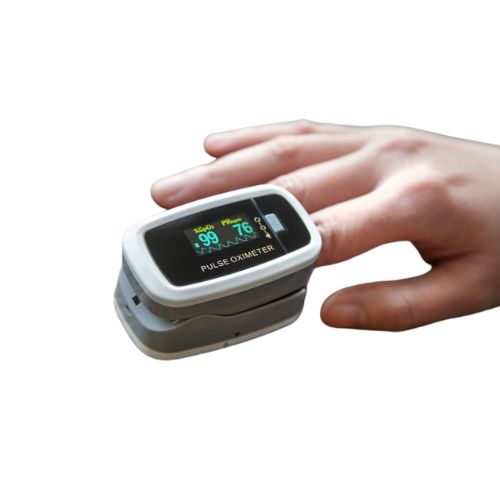
Welcome to Ever Oxygen BD

Thanks to pulse oximeters, keeping tabs on your oxygen levels has never been easier. These small, portable devices have become essential for monitoring health, particularly during the pandemic. But what exactly is a pulse oximeter, and why is it so important?
A pulse oximeter is a noninvasive medical device used to measure blood oxygen saturation (SpO2) levels. It’s handy. It clips onto your finger (or sometimes your ear or toe) and provides a quick snapshot of how well oxygen is being delivered to the farthest parts of your body.
Oxygen saturation levels are a critical indicator of your overall health. Low oxygen levels can signal respiratory issues, chronic conditions, or even an acute health emergency like COVID-19 complications. By regularly monitoring SpO2, you can catch potential health issues early and seek medical attention if needed.
Oxygen saturation refers to the percentage of oxygen your red blood cells carry compared to the total amount they can. Typically, this measurement is expressed as a percentage, so when someone refers to SpO2, they talk about how well oxygen is getting to your tissues and organs.
Normal SpO2 levels for a healthy individual usually range between 95% and 100%. Anything below 90% is considered low and may indicate hypoxemia, a condition in which not enough oxygen is getting into the blood.
Regular monitoring is particularly important for people with chronic lung diseases, heart conditions, or infections that affect breathing, like pneumonia or COVID-19. For others, monitoring can help detect health issues before symptoms worsen.
The most common type, fingertip pulse oximeters, are small, portable, and easy to use. They clip onto your finger and provide a reading within seconds.
These are often used for continuous monitoring, especially during sleep. They wear watches and are connected to sensors that measure SpO2 levels.
These are more advanced devices used in medical settings. They come with a display unit and a probe that attaches to the patient’s input and offers more detailed readings.
Modern technology has led to smartphone-compatible pulse oximeters, which can connect to an app and allow users to track and store their readings over time.
Pulse oximeters work by shining light through your skin and measuring how much light the blood absorbs. Oxygenated blood and deoxygenated blood absorb light differently, which is how the device calculates oxygen saturation levels.
The device uses red and infrared light to detect the color of your blood. Oxygen-rich blood is bright red, while oxygen-poor blood is darker. The difference in absorption of these light waves helps calculate the SpO2.
A typical pulse oximeter includes sensors, a display screen, and a probe that attaches to your finger. It measures not only oxygen levels but also your pulse rate.
To get an accurate reading, ensure the device is placed correctly, avoid movement, and avoid bright lights that can interfere with the sensor.
Avoid taking measurements when your hands are cold, as poor circulation can affect the accuracy of the reading. Also, don’t rely on anything taken while moving or during vigorous activity.
Extreme cold, bright light or high altitudes can lead to inaccurate readings. It’s best to Use the device in a comfortable indoor setting.
Health conditions like anemia, poor circulation, or even nail polish can interfere with the reading. Always interpret results in context with your overall health.
Dark nail polish or artificial nails can obstruct the sensor, leading to false readings. For the most accurate results, remove nail polish or use a bare finger.
Recent studies have shown that darker skin pigmentation and thicker skin may affect the accuracy of some pulse oximeters, making it crucial to choose a reliable and well-tested device.
If you’re experiencing respiratory issues due to a cold, flu, or COVID-19, checking your oxygen levels regularly can help you determine if you need medical help.
For individuals with chronic conditions like COPD or asthma, regular use of a pulse oximeter can help manage symptoms and prevent complications.
Athletes use pulse oximeters to measure how well their bodies deliver oxygen during intense training or high-altitude activities, ensuring optimal performance.
Pulse oximeters have become a popular tool during the COVID-19 pandemic. They allow individuals to monitor their oxygen levels at home and detect early signs of complications.
If your SpO2 levels drop below 90%, it’s essential to take action. Low levels can indicate respiratory distress or hypoxemia, requiring immediate attention.
Take slow, deep breaths and try to relax. If you can, supplement oxygen or reposition yourself to improve airflow. If levels don’t improve, you don’t need medical help.
If your levels remain consistently low despite efforts to raise them, contact your doctor or go to the emergency room for further evaluation.
Regular monitoring allows for early detection of potentially dangerous health conditions, leading to quicker interventions and better outcomes.
Consistent monitoring can help those with chronic respiratory or heart conditions track symptoms, adjust treatments, and avoid hospital visits.
Monitoring SpO2 can help athletes optimize performance and prevent overtraining or other health issues, especially during intense workouts.
If the device isn’t working, it isn’t replacing the batteries or ensuring the sensor is clean. If issues persist, consult the manufacturer for support.
Inconsistent readings may be caused by movement, poor circulation, or interference from external factors like light. To achieve the most reliable results, reposition the device and ensure a stable environment.
Regularly monitoring your oxygen saturation levels using a pulse oximeter is a simple yet powerful way to stay on top of your health. Whether managing a chronic condition, monitoring your fitness levels, or recovering from illness, this tiny device can provide invaluable insights into your body’s oxygen body system. Please don’t underestimate the peace of mind it offers in keeping your health in check.
Consistent and reliable shipping – that's our promise.
We're here to help! Get fast and friendly solutions to your questions.
Shop with confidence. Money back guaranteed.
Your payment information is safe with our secure systems.
